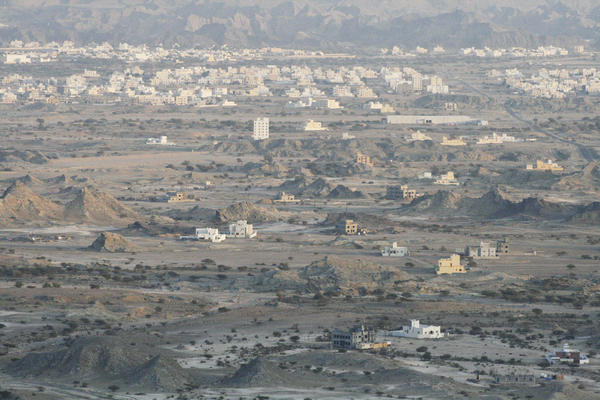Muscat and Oman - Restructuring a Desert Landscape

Prof. Roger Diener, Prof. Marcel Meili,
Vesna Jovanovic, Christian Mueller Inderbitzin, Mathias Gunz, Liisa Gunnarsson
Exercise types: 'e' or 'e+i'
Group work in Basel and research on location in Muscat, Oman
Start: Tuesday, 19. February, 2013, 10 AM at ETH Studio Basel, Spitalstrasse 8, 4056 Basel
Urbanization processes are seldom engined only by increased global interactions, but spring from genuine local development patterns, needs, resources and reactions upon these. Oil related economies have catalyzt an urban exodus in parts of the Middle East and especially in the Gulf region and enabled a vast territorial appropriation of former pristine land. In Oman we see the rapid development spinning off the oil revenue with new structuring powers and desires projected and overwriting old urban forms traditionally structured by nature and the presence of water. We trace a state of constant transition in search of a new balance. The new and the old both being present, and the country’s history of being an important actor within global maritime trade, allows for a deepened reading of the territory. This attracted our attention as a project continuing our interest in territorial research. ETH Studio Basel has previously done territorial researches in Switzerland (1999-2005), the Nile Valley (2009), Rome - The Adriatic (2010), Florida (2011) and in Vietnam (2012). These have clearly shown ways in which densely populated environments invent new types of spaces: traditional natural or rural areas turn into urbanized territories characterized by a multilayered occupation of landscape, overlapping structures and meanings.
Investigating the Specificity of the Muscat Territory, an Introduction
PUBLICATIONS: MUSCAT AND OMAN, PEOPLE: PROF. MARCEL MEILI, PROF. ROGER DIENER, CHRISTIAN MUELLER INDERBITZIN, MATHIAS GUNZ, VESNA JOVANOVIC, LIISA GUNNARSSON

